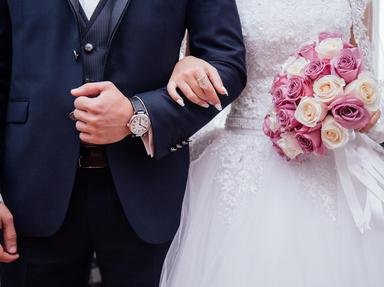Quiz Answer Key and Fun Facts
1. Which queen started the vogue for white wedding gowns?
2. You'll often see shoes tied to the bumper of the car that carries the newlyweds away from the wedding. Where did that tradition originate?
3. Where would you find a bride going from door to door to collect wedding presents in a pillow case?
4. An old Swiss tradition requires the bride and bridegroom to do something with a spade. What?
5. In rural areas in the Czech Republic, it is a tradition that the bride wear something made by the bride's family and friends. What does she wear?
6. In North America and the U.K., the bride is supposed to wear or carry "something old, something new, something borrowed, something blue (and a silver sixpence for her shoe)". What does each item signify?
7. What would a wedding be without flowers? Every flower has a meaning and up until recently there was one particular flower, symbolizing purity, chastity and loveliness, which was incorporated into bridal bouquets. Which of these flowers is it?
8. In many traditional native North American weddings the bridegroom wears a blanket over his wedding finery. What does he do with the blanket?
9. Where would you be if the bride came into the church with a lump of sugar in her glove?
10. A traditional Japanese bride wears a tsunokakushi, a triangular head band. Why?
Source: Author
Cymruambyth
This quiz was reviewed by FunTrivia editor
spanishliz before going online.
Any errors found in FunTrivia content are routinely corrected through our feedback system.

